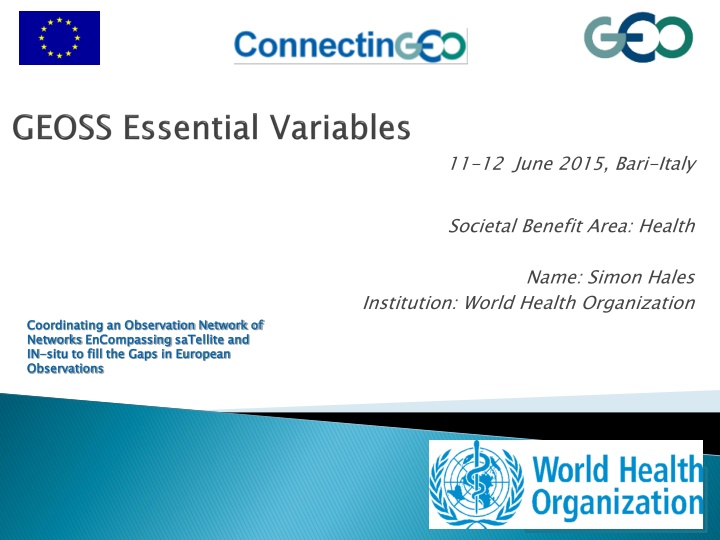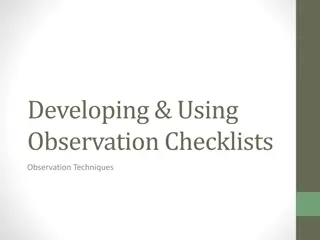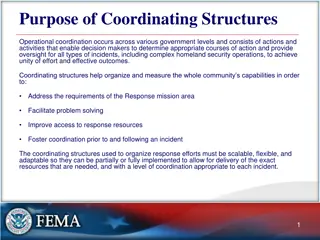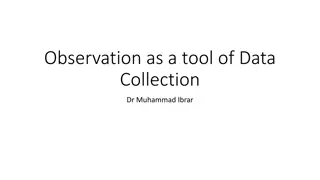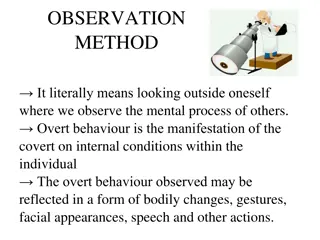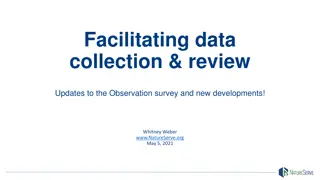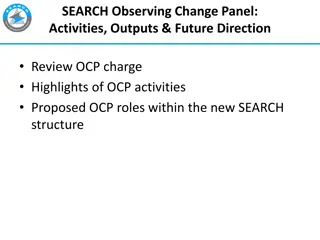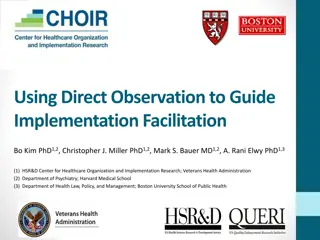Coordinating Observation Network for European Health
In June 2015 in Bari, Italy, Simon Hales from the World Health Organization led efforts to coordinate an observation network focusing on enhancing health research across Europe. The initiative aims to bridge gaps in European observations by integrating in-situ and satellite data. This network endeavors to optimize data collection processes, enhance research capabilities, and improve health outcomes through collaboration and comprehensive data coverage.
Download Presentation

Please find below an Image/Link to download the presentation.
The content on the website is provided AS IS for your information and personal use only. It may not be sold, licensed, or shared on other websites without obtaining consent from the author.If you encounter any issues during the download, it is possible that the publisher has removed the file from their server.
You are allowed to download the files provided on this website for personal or commercial use, subject to the condition that they are used lawfully. All files are the property of their respective owners.
The content on the website is provided AS IS for your information and personal use only. It may not be sold, licensed, or shared on other websites without obtaining consent from the author.
E N D
Presentation Transcript
11-12 June 2015, Bari-Italy Societal Benefit Area: Health Name: Simon Hales Institution: World Health Organization Coordinating an Observation Network of Networks IN Observations Coordinating an Observation Network of Networks EnCompassing IN- -situ to fill the Gaps in European Observations EnCompassing saTellite situ to fill the Gaps in European saTellite and and YOUR LOGO
Is your community developing a set of area- specific essential variables (EV)s? (yes but note that area specific is not a useful concept in the global health context) If not, is the community planning to start this in the near future? Have you attended previous meeting? No Are you considering reference documents from other domains? Yes
What criteria, methodology, and process should be Top down: start with health significance Describe relevant causal pathways / networks Consider how EO can contribute useful information Do you have a template to document a EV? No, but good examples of earth observation contributing to health planning for extreme climate events, (cyclones, heatwaves, air pollution), Emerging examples for other issues, water, food security, some communicable diseases should be used to identify EVs?
Global burden of disease: (biomedical model, focus on downstream risk factors = limited usefulness in this context) Poor countries: effects of poverty via lack of access to food, water, shelter, clean energy: high mortality rates, low life expectancy, high burden of communicable diseases, unplanned urban settlements = poor infrastructure (WASH, shelter vulnerable to disasters, dirty energy) Rich countries: diseases of overconsumption (non communicable disease: cardiovascular diseases, cancers, psychological problems). Threat to global ecological sustainability is the most important (and relevant) health issue
EVs (from other domains) are more or less relevant to health
Health is an integrating factor Paradox ~ health is improving (on average) Prediction: this will not last Fundamental determinants of health: Little to do with health services (the biomedical model is not very useful in this context) More to do with long term availability services and the social distribution food, water, shelter, security, (life purpose) availability of ecosystem distribution of health-giving,
Meeting current human needs... without compromising the health of future generations We need to live within planetary boundaries ( and social boundaries) The most important essential variables for health should be included in upstream social benefit areas BUT the social distribution of positive (health-giving) factors and negative (unhealthy) exposures is not necessarily captured This requires additional analysis (eg. geographic overlay of physical/earth observation variables with socio-demographic variables)? The most important essential variables for health should be included in upstream social benefit areas
There are examples of direct toxicological effects on health BUT most impacts, including the most important impacts, occur via complex pathways
K.R. Hayes et al. / Ecological Indicators 57 (2015) 409 419
Air quality
Air quality climate extremes, heat, UVR, cyclones (NRT data)
Air quality Social factors climate extremes, heat, UVR, cyclones (NRT data)
(long term) ecosystem services: Productive, recycling and regulating food, water
Consumption, population, social distribution of resources
Scenarios of future development (eg. SDGs) of Indicators: population level Essential variables: Weather/climate, food, water, energy: availability (transport, housing, waste infrastructure, within and between countries) + +distribution (socio-economic data) Essential variables: Primary observations: births, deaths, disease patterns Primary observations:
Scenarios of future development Earth system models Indicators: of population with healthy living conditions Indicators: eg of population with healthy living conditions eg. proportion . proportion Observations of policy and management Social system: (migration, conflict, resources) Essential variables: Weather/climate, food, water, energy: availability (transport, housing, waste infrastructure, within and between countries) + +distribution (socio-economic data) Essential variables: Ecosystem services Disciplinary models (eg. air quality) Primary observations: births, deaths, disease patterns Primary observations:
Overlapping with EVs in other domains (SBA) Yes, very substantially, especially climate, disasters, water, food, energy, biodiversity Priorities for EVs operational monitoring Contribution to understanding and validating assessment models (medium to long term scenarios, rather than short term forecasts) Recommendations for GEO/GEOSS Inform global policy questions about sustainability rather than specific biomedical health issues Extend engagement with global health community Future work Sustainable development goals, UN conventions (FCCC, CBD) planetary boundaries, safe pathways of development, extreme events, food security, water and sanitation, Integration with socio-economic variables (social inequality, population) Human impacts on earth system (production, consumption)
Scenarios of future development Earth system models Social system: (migration, conflict, resources) human impacts on Essential variables: Weather/climate, food, water, energy: availability (transport, housing, waste infrastructure, within and between countries) + +distribution (socio-economic data) Essential variables: earth system Ecosystem services Primary observations: births, deaths, disease patterns Primary observations:
Weather/climate, near real time data, forecasting of extreme events Famine early warning Short term forecasting of communicable diseases (under development, generally not yet operationally useful)
To what extent these EVs (if any) are validated and used Limited validation and use (as far as I know) Are the EVs linked to applications and users? (not efficiently, see examples) How is a community agreement reached? Not clear (at least, not to me community is fragmented and not well established) Is a community review process in place? Are the EVs linked to an international body Yes (SDGs, Future Earth, CBD, Montreal protocol, UNFCCC, UNEP, UNDP, UNICEF, WMO, WHO, IFRCRCS) Involved in accepting the EVs? Not clear
Do you have a database with information on the EVs? No relevant data are scattered and mostly not linked to health issues (due to complex, indirect causal pathways for the most important impacts) Do you know network currently operational for medium-term/long-term monitoring? All existing networks are potentially relevant Are the current operational networks operated by your community measuring the EVs? Health community relies on other to do this
For some Use Case, have you already focused on EVs features: Temporal frequency Spatial resolution Accuracy etc. Yes, (example of air pollution, others below) Challenges and how these are addressed (if any) Thinking in terms of global sustainability, not biomedical effects
Long term (multi-annual) average ambient fine particle concentration at the surface Method: remote sensing plus atmospheric model plus epidemiological model Global Estimates of Ambient Fine Particulate Matter Concentrations from Satellite-Based Aerosol Optical Depth: Development and Application Aaron van Donkelaar et al, http://ehp.niehs.nih.gov/0901623/
EO can provide water storage in groundwater and surface stores (lakes) and measures of wetland and ecosystem extent
http://apps.who.int/iris/bitstream/10665/174012/1/9789241508537_eng.pdfhttp://apps.who.int/iris/bitstream/10665/174012/1/9789241508537_eng.pdf ?ua=1
